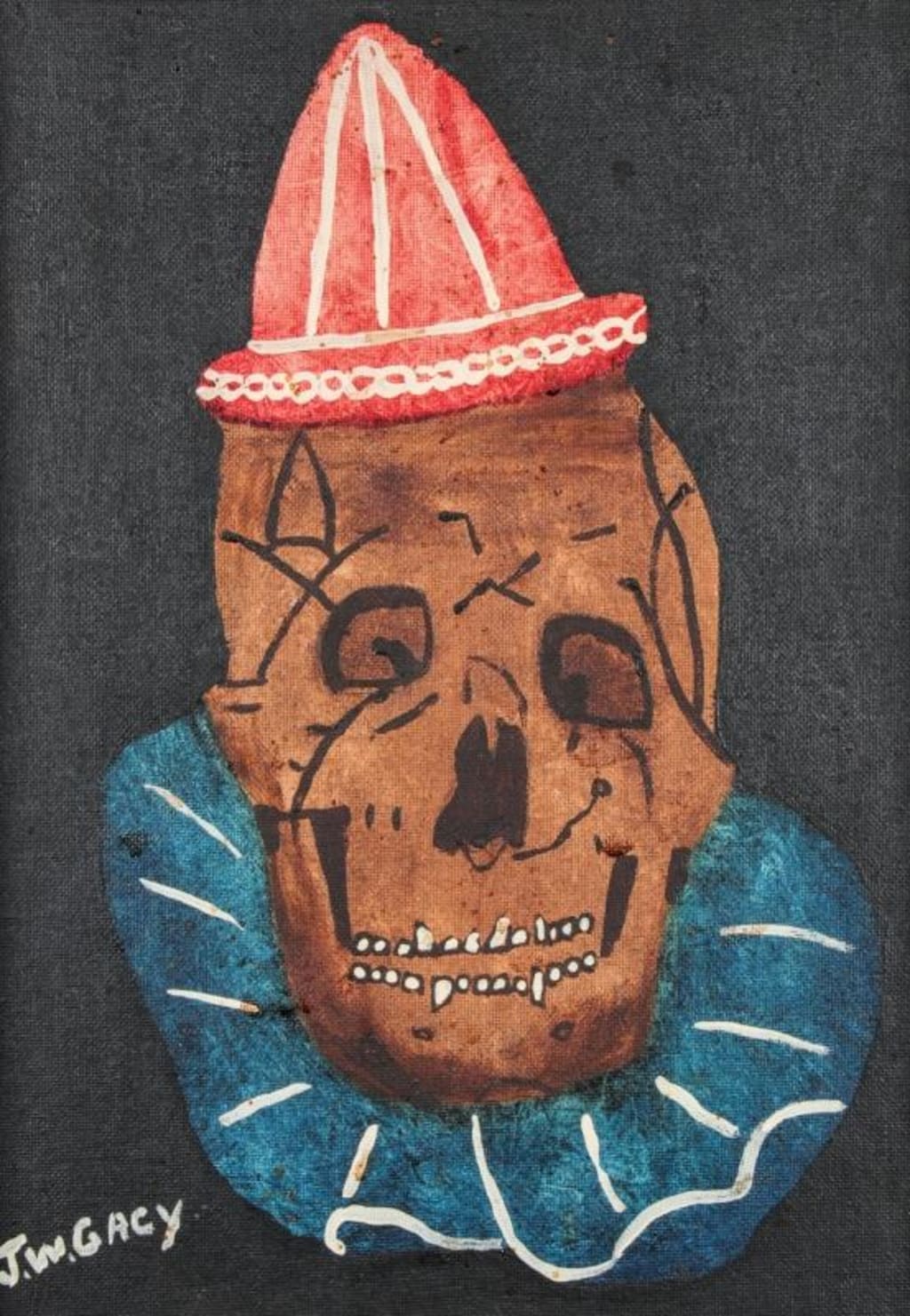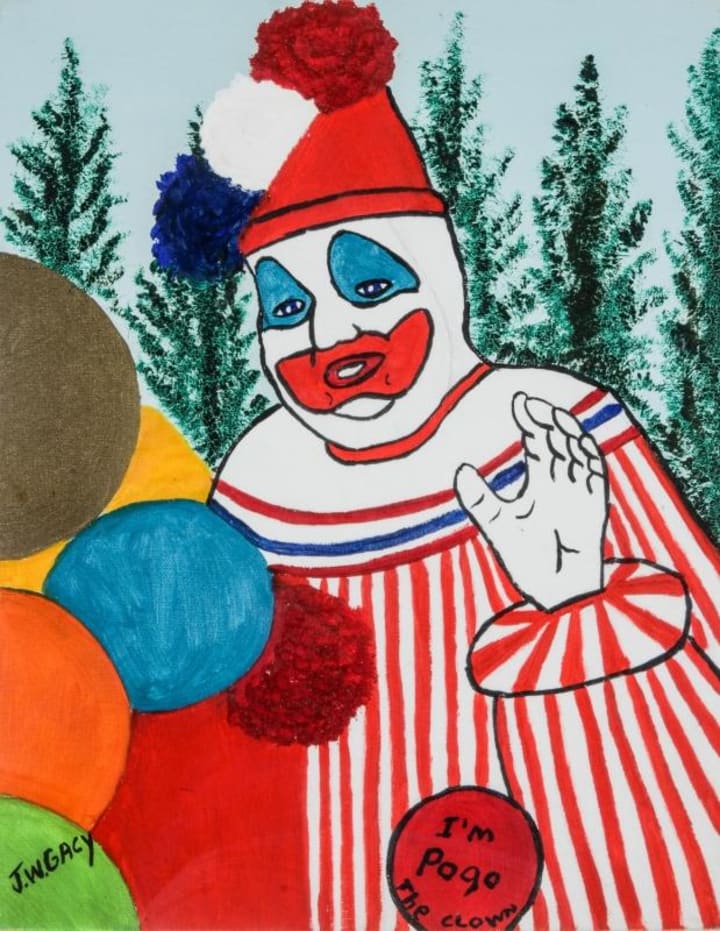From Murderer to Artist: The Controversial Legacy of John Wayne Gacy's Paintings
In this article, we will explore the legacy of John Wayne Gacy's paintings and delve into the debate surrounding their value and significance in art.

John Wayne Gacy was a notorious serial killer who shocked the world with his heinous crimes in the 1970s. But what many people don't know is that he was also an artist. Gacy created hundreds of paintings during his time on death row, and his artwork has become controversial. Some see it as a way for him to profit from his crimes, while others view it as a form of therapy or a way to express himself. Whatever your opinion may be, there is no denying that Gacy's paintings are hauntingly beautiful and have a unique style that is all his own. In this article, we will explore the legacy of John Wayne Gacy's paintings and delve into the debate surrounding their value and significance in art.
Who is John Wayne Gacy?
Born in 1942 in Chicago, John Wayne Gacy was the second of three children. He had a complex relationship with his father, who was an alcoholic and often physically abusive towards him. Gacy was also a victim of bullying at school, which led to him dropping out of high school and running away from home. He joined the United States Army in 1964 but was discharged the following year after being diagnosed with a personality disorder.
Gacy was married twice and had two children. He was a successful businessman who owned several KFC franchises and was active in his local community. However, he had a dark side. Gacy was a sexual predator who targeted young men and boys, luring them to his house and then murdering them. He was eventually caught when one of his victims escaped and went to the police.
The discovery of Gacy's paintings
After he was arrested, Gacy was put on trial and found guilty of 33 counts of murder. He was sentenced to death and spent the next 14 years on death row at Menard Correctional Center in Illinois. During this time, he began to paint. Gacy was a self-taught artist who had always enjoyed drawing as a child. He started by creating simple sketches but soon moved on to more complex paintings.
Gacy's paintings were discovered by chance. A fellow inmate found them in his cell and was so impressed by them that he contacted a friend who was an art dealer. The dealer was intrigued by the paintings and arranged to sell them at an auction. They were an instant success, with collectors and art enthusiasts eager to own a piece of Gacy's work.
The controversy surrounding Gacy's art
Gacy's paintings quickly became the subject of much controversy. Some people saw them as a way for him to profit from his crimes, while others viewed them as a form of therapy or a way to express himself. Some believed that Gacy's art needed to be better to be considered legitimate art.
One of the main criticisms of Gacy's art is that it glorifies his crimes. Many of his paintings feature clowns, his trademark during his killing spree. Some people see this as a way for Gacy to continue to taunt his victims, even after his death.
Analysis of Gacy's paintings
Despite the controversy surrounding his art, there is no denying that Gacy had a unique style. His paintings are often dark and disturbing but also beautiful in their way. Many of his works feature clowns, skulls, and other macabre subjects. However, landscapes, flowers, and other more traditional issues also exist.
Gacy's paintings are often compared to other artists, such as Francis Bacon and Edvard Munch. However, his style is also distinctly his own. His use of color and texture and his attention to detail make his paintings stand out.
The value of Gacy's paintings
Despite the controversy surrounding his art, Gacy's paintings have become highly sought after by collectors. Some of his works have been auctioned for tens of thousands of dollars. However, some believe that his paintings should not be sold at all.
One argument against selling Gacy's paintings is that it is immoral to profit from the crimes of a serial killer. Some people believe that the money from selling his art should be donated to charity or used to compensate the victims' families.

The ethics of selling and displaying Gacy's paintings
The debate around the value of Gacy's paintings raises essential questions about the ethics of selling and displaying controversial art. Should art be judged on its merits, regardless of the artist's background? Or should we consider the artist's actions when assessing their work?
There are no easy answers to these questions. However, Gacy's paintings will continue to be a source of controversy and debate for years.
Other examples of controversial art
Gacy's paintings are not the only examples of controversial art. Throughout history, artists have pushed boundaries and challenged societal norms with their work. Some examples include:
- Marcel Duchamp's Fountain was a urinal signed with a pseudonym and submitted to an art show in 1917.
- Andres Serrano's Piss Christ, a photograph of a crucifix submerged in the artist's urine.
- Chris Ofili's Holy Virgin Mary, a painting that featured elephant dung.
These works have all been criticized for their controversial subject matter and provocative nature. However, they have also been praised for their artistic merit and ability to challenge our perceptions of what art can be.
The Impact of Gacy's Legacy on the art world
The legacy of John Wayne Gacy's paintings extends far beyond the art world. His crimes and art have been the subject of countless books, films, and TV shows. They have also sparked essential discussions about the nature of evil, the limits of artistic expression, and the ethics of profiting from crime.
Gacy's paintings have also had an impact on the art world itself. They have forced us to question our assumptions about what art is and what it should be. They have challenged us to look beyond the surface of a painting and to consider the context in which it was created.
Conclusion
John Wayne Gacy's legacy is a complex one. He was a man who committed unspeakable acts of violence, yet he was also an artist who created hauntingly beautiful paintings. The controversy surrounding his paintings raises essential questions about the nature of art, the ethics of selling and displaying controversial works, and the legacy of serial killers.
Whether we view Gacy's paintings as a form of therapy, a way for him to profit from his crimes, or simply as art, there is no denying their power. They force us to confront the darkest aspects of human nature and consider art's role in society.





Comments
There are no comments for this story
Be the first to respond and start the conversation.